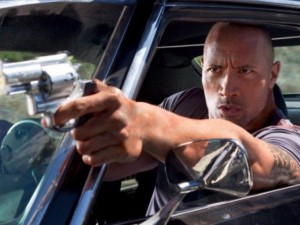
When I saw the previews for director Todd Phillips’ Due Date, it looked pretty obvious what I was getting myself into. On the surface, Due Date appeared to be a 21st century reboot of the 1987 comedy, Planes, Trains, and Automobiles, starring Steve Martin and John Candy. Planes is a classic. Martin and Candy are comedic legends. Trying to update a great film (even if they aren’t explicit about it) is always tricky business and rarely a good idea. Still, the previews, the re-teaming of Zach Galifianakis and Phillips, and the inclusion of Iron Man sucked me into believing it would be worth seeing. Sure, Due Date was sure to have its quirks. But coming off Phillips’ surprise hit The Hangover, it didn’t seem reasonable to think with Downey Jr. on board Due Date wouldn’t be another pleasant surprise and a interesting twist on old favorite. Sigh. While premise wise Due Date is almost a carbon copy of Planes, Trains, and Automobiles, Due Date derails (sorry, had to use it) somewhere between Alabama and the Grand Canyon.
Due Date is the story of workaholic Peter Highman (Downey Jr.) and his misadventures with fellow traveler Ethan Tremblay (Galifianakis). Highman is on business in Atlanta and needs to get home for the birth of his first child across the country in L.A. Normally just a few hour flight away, Highman is kicked off his flight and placed on the nation’s “no-fly list†while his bag and wallet are carried off on the flight without him. With few options and only five days to get home before the birth, Highman is offered and accepts a ride by a strange co-traveler, aspiring actor Ethan Tremblay. Let the hilarity ensue! Kinda…

To be fair, Due Date is not without its moments and Downey Jr. and Galifianakis do seem to have some comedic chemistry. Still, it seems most of the comedic set-ups and gags are wasted on the lowest common denominator, which becomes endlessly frustrating as the movie continues to develop. So many potentially hilarious moments are cut short or never develop at all just so that Galifianakis can do something completely over-the-top and bizarre. Sure, the thirteen year-old kid who snuck into the theater sitting behind me thought it was funny. But it’s not what I was hoping for.
The movie’s most glaring flaw comes in the form of the relationship that develops between Downey Jr. and Galifianakis. In Planes, Trains, and Automobiles, Candy and Martin develop a friendship that comes across as heartfelt and genuine in the movies final scenes. In Due Date, the friendship between the movie’s two leads seems bizarre and forced. I’m still scratching my head as to why Downey Jr. ever develops any sort of affinity towards Galifianakis other than the periodic drug usage that occurs during the movie. Galifianakis comes across as so over-the-top and sometimes downright disgusting that there is no conceivable way anyone in their right mind would be able to put up with him for five minutes let alone five days. That’s what was so brilliant about Candy’s character in Plains, Trains, and Automobiles. He is an everyman, an annoying and attention starved everyman, but still an everyman. Candy strikes the right balance between endearing and irritating. Galifianakis leaves us only with absolutely strange to the point of ludicrous.
In the end, Due Date was a serious let down. Sure, I laughed at times. But what could have been a nice update of a classic turned into a sophomoric affair. To say cheap gags and middle school boy humor abounds in this one is an understatement. This one might be worth a rental but definitely not worth the price of seeing it at your local megaplex. In fact, it might be more worth it to look up your local listings and see if the old John Candy and Steve Martin flick is on somewhere. It probably is, and it’s free and far more enjoyable.
Rating:[Rating:2/5]




















